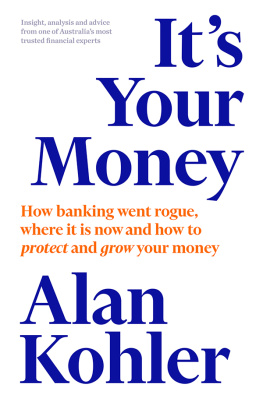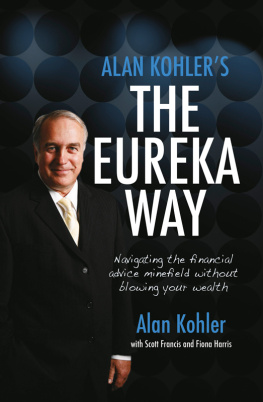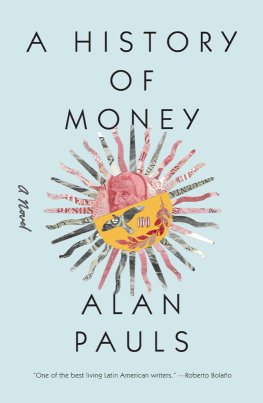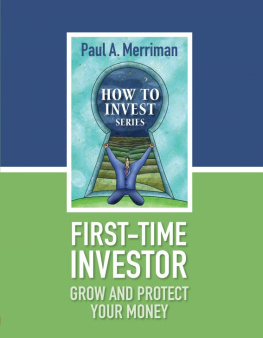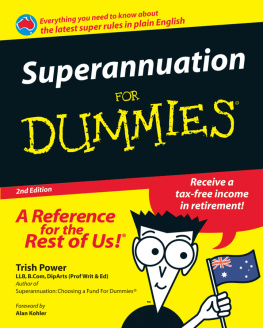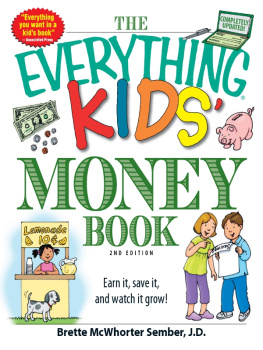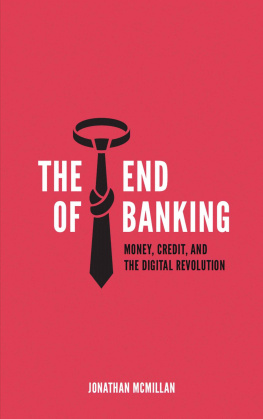Alan Kohler - Its Your Money: How Banking Went Rogue, Where it is Now and How to Protect and Grow Your Money
Here you can read online Alan Kohler - Its Your Money: How Banking Went Rogue, Where it is Now and How to Protect and Grow Your Money full text of the book (entire story) in english for free. Download pdf and epub, get meaning, cover and reviews about this ebook. year: 2019, publisher: Schwartz Books Pty. Ltd., genre: Politics. Description of the work, (preface) as well as reviews are available. Best literature library LitArk.com created for fans of good reading and offers a wide selection of genres:
Romance novel
Science fiction
Adventure
Detective
Science
History
Home and family
Prose
Art
Politics
Computer
Non-fiction
Religion
Business
Children
Humor
Choose a favorite category and find really read worthwhile books. Enjoy immersion in the world of imagination, feel the emotions of the characters or learn something new for yourself, make an fascinating discovery.
- Book:Its Your Money: How Banking Went Rogue, Where it is Now and How to Protect and Grow Your Money
- Author:
- Publisher:Schwartz Books Pty. Ltd.
- Genre:
- Year:2019
- Rating:3 / 5
- Favourites:Add to favourites
- Your mark:
- 60
- 1
- 2
- 3
- 4
- 5
Its Your Money: How Banking Went Rogue, Where it is Now and How to Protect and Grow Your Money: summary, description and annotation
We offer to read an annotation, description, summary or preface (depends on what the author of the book "Its Your Money: How Banking Went Rogue, Where it is Now and How to Protect and Grow Your Money" wrote himself). If you haven't found the necessary information about the book — write in the comments, we will try to find it.
Alan Kohler: author's other books
Who wrote Its Your Money: How Banking Went Rogue, Where it is Now and How to Protect and Grow Your Money? Find out the surname, the name of the author of the book and a list of all author's works by series.
Its Your Money: How Banking Went Rogue, Where it is Now and How to Protect and Grow Your Money — read online for free the complete book (whole text) full work
Below is the text of the book, divided by pages. System saving the place of the last page read, allows you to conveniently read the book "Its Your Money: How Banking Went Rogue, Where it is Now and How to Protect and Grow Your Money" online for free, without having to search again every time where you left off. Put a bookmark, and you can go to the page where you finished reading at any time.
Font size:
Interval:
Bookmark:

Published by Nero,
an imprint of Schwartz Publishing Pty Ltd
Level 1, 221 Drummond Street
Carlton VIC 3053, Australia
www.nerobooks.com
Copyright Alan Kohler 2019
Alan Kohler asserts his right to be known as the author of this work.
ALL RIGHTS RESERVED.
No part of this publication may be reproduced, stored in a retrieval system, or transmitted in any form by any means electronic, mechanical, photocopying, recording or otherwise without the prior consent of the publishers.
9781760641016 (paperback)
9781743820742 (ebook)

Cover design by Ella Egidy
Text design and typesetting by Duncan Blachford
NOTE TO READERS
This publication contains the opinions and ideas of its author. It is sold with the understanding that neither the author nor the publisher is engaged in rendering legal, tax, investment, insurance, financial, accounting, or other professional advice or services. If the reader requires such advice or services, a competent professional should be consulted. Relevant laws vary from state to state. The strategies outlined in this book may not be suitable for every individual, and are not guaranteed or warranted to produce any particular results.
No warranty is made with respect to the accuracy or completeness of the information contained herein, and both the author and publisher specifically disclaim any responsibility for any liability, loss or risk, personal or otherwise, which is incurred as a consequence, directly or indirectly, of the use and application of any of the contents of this book.
Introduction
M Y GOAL IN WRITING ITS YOUR MONEY IS threefold. First, to explain, as I see it, what went wrong with a system that was meant to serve you. Second, to unpack why the royal commissions conclusions missed the mark although the hearings did not. And third and most importantly to help you take back control of your finances.
That doesnt necessarily mean doing it yourself. For most people thats either not really possible or not a good idea. It means having enough knowledge and confidence to be a strong customer of the financial services industry.
You are probably already a confident customer of other industries that serve you from health services to car repairs. Finance and investing may seem more daunting many people turn to jelly when they have to confront them but actually the businesses engaged in this industry are just like any others. Its just that theyve often exploited a knowledge gap among consumers to their own benefit.
You can put a stop to that now and this book will show you how.
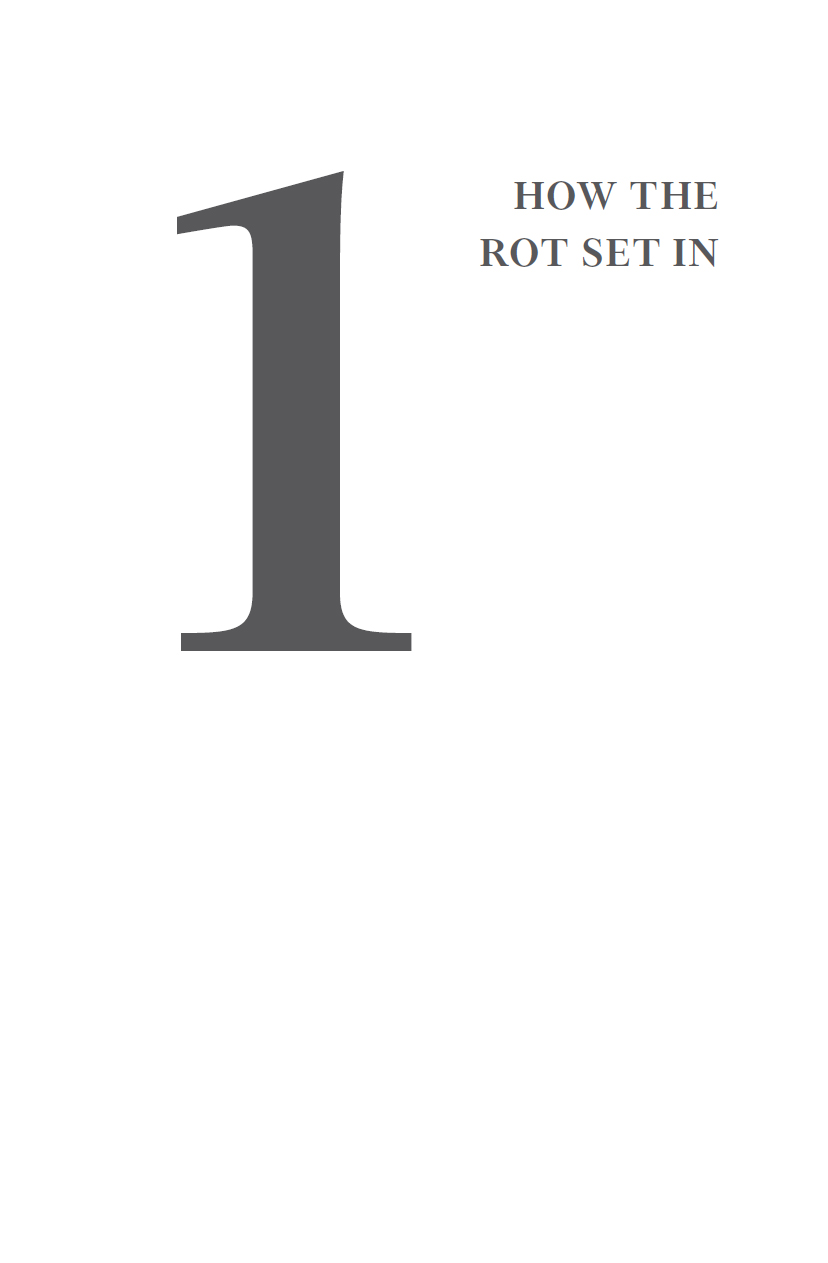
I START FROM THE PROPOSITION THAT MOST PEOPLE have good intentions. They dont need rules to make them do the right thing. Laws and regulations are necessary only for the few people who are bad or desperate or greedy enough to harm others. That applies to banking and finance as much as it does to anything else.
Having covered the banking and finance sector all businesses, in fact as a journalist for more than forty-five years, I have a clear view of what led to the mess the banks are in today, and how they became corporate pariahs. I dont think its because bankers or financial advisers are inherently worse people than anyone else. Its more that theres been a failure to regulate them properly, and especially a failure to limit their power and punish transgressions. There are clear limits and consequences in other fields of life, but not in finance. Im sure there is about the same proportion of people prepared to cut corners and hurt others in banking as there is in the world more generally the problem is that theyve not been reined in.
Sure, along the way there have been a few notably gross offenders who were held to account. There were also some significant individuals who made a positive difference to how the system works. But my contention is that the failures in banking and financial services exposed by the Royal Commission into Misconduct in the Banking, Superannuation and Financial Services Industry (the Hayne Royal Commission), the terrible behaviour, greed and corruption, are mostly due to failures of policy and regulation that allowed them. So lets look at how it all went wrong with the bankers and money managers, and what lessons we can learn from that as their customers.
The Banks
T HREE SEPARATE EVENTS IN 1992 SOWED THE seeds of Australias banking crisis. Each of the events had profound unintended consequences for the nations financial system. It was a big year, beginning with Yeltsin and Bush declaring the end of the Cold War, and ending with Bill Clinton winning the US presidential election. In between, Deng Xiaoping kicked off market reforms in China, the European Union was founded with the signing of the Maastricht Treaty, and Sidney Nolan and Brett Whiteley both died. It was a momentous year for me, too. I turned forty and was appointed editor of The Age. The end of the Cold War and Dengs reforms were historic developments, thats for sure, but the three important events for Australian banking that happened in 1992 were as follows. First, the charismatic Peter Smedley, a career executive with the Shell Oil Company, took the reins as CEO of a stuffy old life insurance and wealth management business in Melbourne called Colonial Mutual. Second, Paul Keating created the nations modern, compulsory superannuation system. And finally, desperate Westpac chairman John Uhrig approached an American named Bob Joss to be CEO, and paid him the earth.
The bancassurance bug
Lets start with Peter Smedley. At the time, Colonial Mutual wasnt a bank and had nothing to do with banking: it had been founded in 1873, as a customer-owned mutual life insurance provider, by Sir Redmond Barry, one of the Victorian colonys leading figures. (Among other things, Barry was the presiding judge at the trial of Ned Kelly. Famously, as he sentenced the bushranger to hang, he said, May God have mercy on your soul.) Smedley had a thirty-year career with Shell, travelling around the world and rising through the ranks until he was seen as a contender for the top job. But at the age of forty-nine he had a midlife epiphany. He returned to Australia and got a job as CEO of one of Australias longest-running, most venerable and conservative life insurance offices.
Smedley was a man in a hurry. An interloper in an unfamiliar world, he needed to prove himself, and he did so with amazing chutzpah. He quickly transformed Colonial from a mutual society into a listed company, and turned it into one of the most rapacious corporate acquirers the Australian stock exchange had ever seen. He made seventeen acquisitions in eight years, earning himself the nickname Pacman. As an editor and then a columnist, I remember being in awe of the mans tireless ambition. I wrote about his rapid-fire takeovers almost as enthusiastically as he made them. Like Paul Keating, Peter Smedley made great copy.
In 1994, Smedley was ahead of his time. He was an early advocate and global pioneer of the return of financial conglomerates, which had been out of favour since the Great Depression gave them a bad name sixty years earlier. In 1933, a landmark piece of US legislation the Glass Steagall Act banned trading banks from combining with investment banks and insurance companies. That rule more or less applied around the world, until a new trend changed everything. Smedley introduced Australia to the old but freshened-up concept of bancassurance: combining banks with insurance businesses (particularly life insurance businesses, which in those days encompassed pension funds management) with the idea of selling multiple financial products to bank customers.
Next pageFont size:
Interval:
Bookmark:
Similar books «Its Your Money: How Banking Went Rogue, Where it is Now and How to Protect and Grow Your Money»
Look at similar books to Its Your Money: How Banking Went Rogue, Where it is Now and How to Protect and Grow Your Money. We have selected literature similar in name and meaning in the hope of providing readers with more options to find new, interesting, not yet read works.
Discussion, reviews of the book Its Your Money: How Banking Went Rogue, Where it is Now and How to Protect and Grow Your Money and just readers' own opinions. Leave your comments, write what you think about the work, its meaning or the main characters. Specify what exactly you liked and what you didn't like, and why you think so.

